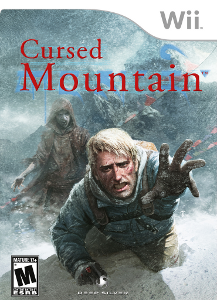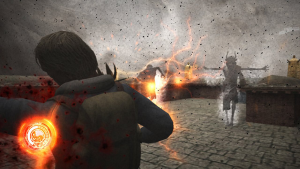When I wrote about Alan Wake last month, I spent a lot of time on mechanics as a function of storytelling. If the controls don’t match the story being told, they don’t really serve the video game experience.
 Cold Mountain, a forgotten survival horror gem for the Nintendo Wii, gets controls as a storytelling device just right. Eric Simmons travels to the Himalayas to try to find his younger brother Frank. Frank was hired to hunt for artifacts in the mountain range and never returned. Eric arrives at the small mountain town to find it totally abandoned. It’s like the locals had no choice but to leave immediately.
Cold Mountain, a forgotten survival horror gem for the Nintendo Wii, gets controls as a storytelling device just right. Eric Simmons travels to the Himalayas to try to find his younger brother Frank. Frank was hired to hunt for artifacts in the mountain range and never returned. Eric arrives at the small mountain town to find it totally abandoned. It’s like the locals had no choice but to leave immediately.
The big conceit of Cold Mountain is that the ghosts who have taken over the town are attracted to noise and movement. You can run to save some time, but you leave yourself vulnerable to attack. You can break every clay vase you find to get healing incense and records from the town, but the noise might get you some unwanted attention.
The ghosts pass through you all the time in the town and on the mountain. The world turns black and white when you’re trapped in their past. They’ve so heavily imprinted their terrible memories on the environment that you’re forced to experience every shocking moment. The ghosts are waiting for the opportunity to destroy you with the same violence and rage that destroyed them.
Cursed Mountain is frustrating to the benefit of the story. The mechanic that best tells the story of this universe means that you have to walk everywhere even when you can run. You have to stop and plan your next move even though the path to the next objective is clear. Actions that are automatic in other games–climbing ladders, opening doors, jumping off a rooftop–are fully controlled by you so you are forced to think about the danger of the ghosts at ever step.
But within the narrative, you know that every moment you waste decreases the chance of you ever finding your brother. If you rush, you’re punished. If you wait, you’re punished.Is the rolling fog a weather phenomenon from the mountain peak or the physical manifestation of the ghosts? Is the voice talking to you through the Wiimote (the first moment that made me jump in the game) alive or dead? Has anyone ever survived this journey to the peak or have the ghosts always plotted against success?
Cursed Mountain takes a lot of risks in its storytelling. The controls–simple as they are–force you to engage with the story. The conclusion is hinted at throughout the game but is far different from any other horror game I’ve ever played. Developer Deep Silver went wild when creating this story but never underestimated the importance of mechanics as a storytelling device.
Deep Silver Vienna, the sub-studio in charge of Cursed Mountain, shuttered two months after the North American release. Deep Silver continues to distribute new games, releasing such varied horror titles as Catherine and Dead Island. The company continues to promote games that reinvent genre with novel mechanics that define and enhance storytelling. That’s a good thing. We need more risky big budget games to shake up how we play and control games.
Thoughts on game mechanics and/or Cursed Mountain? Share them below.

